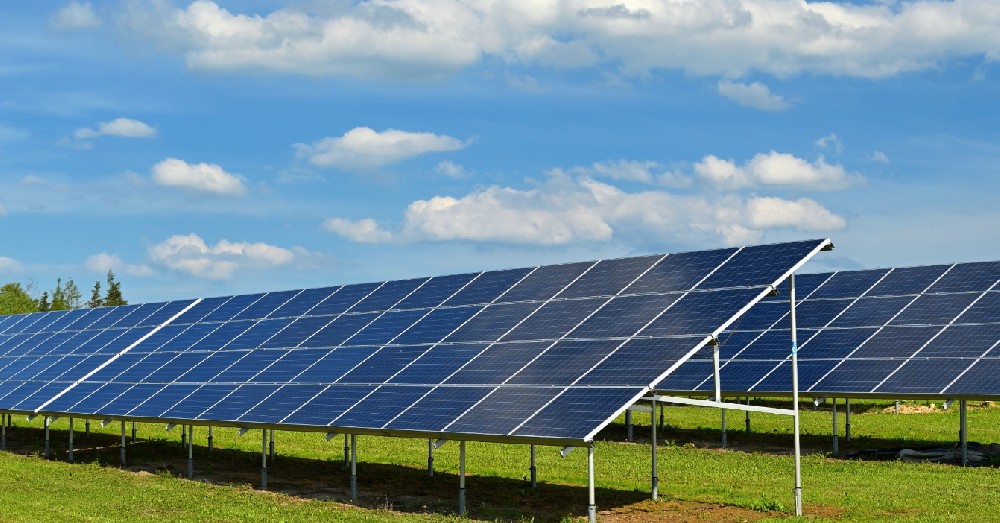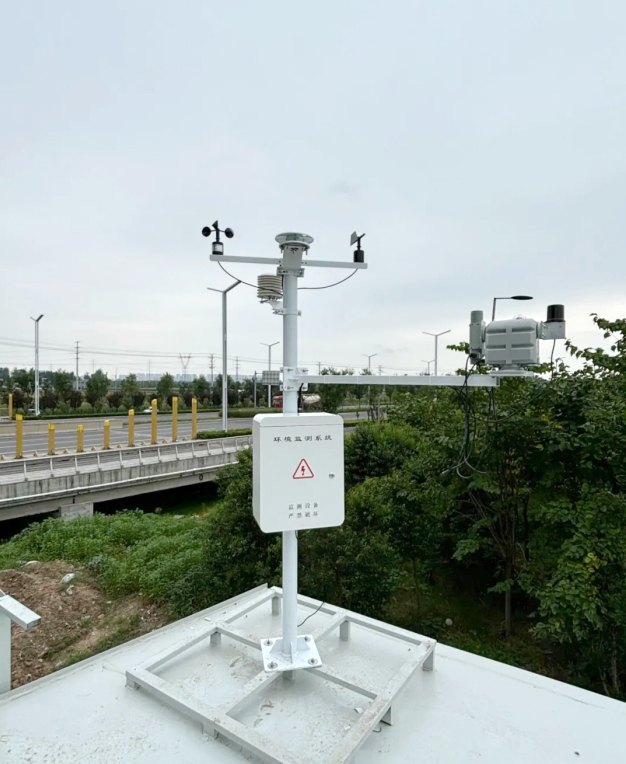

— Blogs —
—Products—
 Consumer hotline +8618073152920
Consumer hotline +8618073152920 WhatsApp:+8615367865107
Address:Room 102, District D, Houhu Industrial Park, Yuelu District, Changsha City, Hunan Province, China
Product knowledge
Time:2025-04-09 11:14:02 Popularity:36
As global demand for renewable energy continues to grow, photovoltaic (PV) power generation has become a cornerstone technology in the clean energy sector. However, the efficiency of PV power plants is affected by various meteorological factors such as solar radiation, temperature, wind speed, and humidity. To optimize plant performance and ensure long-term stable operation, photovoltaic weather stations have emerged. These specialized monitoring devices, designed specifically for PV systems, capture key meteorological data in real-time, providing operators with scientific data. This article will introduce the definition, functions, and important role of photovoltaic weather stations in solar power generation, helping customers understand how this technology enhances efficiency and economic benefits.

A photovoltaic weather station is a professional monitoring device designed for photovoltaic power generation systems, aiming to measure the meteorological parameters that impact the performance of photovoltaic panels in real-time. It is typically equipped with various high-precision sensors to monitor data such as solar radiation intensity, ambient temperature, wind speed, wind direction, and humidity. These data are transmitted to the cloud or local systems via wireless communication for analysis and use by the operation and maintenance (O&M) personnel. Unlike general weather stations, photovoltaic weather stations focus on the specific needs of PV generation, featuring compact designs that are easy to deploy at power plant sites.
The core value of a photovoltaic weather station lies in providing accurate, real-time environmental information to help users assess the operational status of the plant, optimize maintenance strategies, and maximize power generation efficiency. Whether for large commercial plants or small distributed systems, this equipment has become an indispensable tool.

A photovoltaic weather station provides comprehensive support for the operation and management of photovoltaic power plants by monitoring critical meteorological factors. The following are its main functions and roles:
Solar radiation is the direct energy source for photovoltaic power generation, and its intensity determines the total amount of light energy that photovoltaic panels can convert. The photovoltaic weather station is equipped with high-precision solar radiation sensors to record radiation changes in real time, such as peak values on sunny days or low values on cloudy days. O&M personnel can adjust the orientation and tilt angle of the PV panels based on this data to ensure they are always facing the optimal light direction, thereby improving power generation efficiency.
Temperature has a significant impact on the performance of photovoltaic panels. When the ambient temperature is too high, the power generation efficiency of the PV panels decreases because high temperatures increase internal resistance and reduce photoelectric conversion efficiency. The photovoltaic weather station precisely measures the ambient temperature and the surface temperature of the PV panels to help O&M personnel understand the operating conditions of the equipment. If the temperature exceeds the ideal range, cooling measures such as increased ventilation or installation of cooling systems can be implemented to maintain optimal operating conditions.
Wind speed and direction not only affect the heat dissipation of PV panels but also relate to the safety of the plant's structure. Strong winds can put pressure on the supports, potentially causing damage, while moderate wind flow helps lower the temperature of PV panels. The photovoltaic weather station provides real-time wind speed and direction data, allowing O&M personnel to assess wind resistance and reinforce supports or adjust equipment layout as needed to ensure safe operation of the plant.
Although humidity has a minor direct effect on photovoltaic panels, a high-humidity environment can exacerbate surface dust accumulation or cause corrosion of metal components, indirectly reducing power generation efficiency. The humidity sensors in the photovoltaic weather station help users monitor the moisture content of the air and develop appropriate cleaning and maintenance plans. For example, increasing cleaning frequency during humid seasons helps maintain the cleanliness and light absorption capacity of the PV panels.
To meet the actual needs of photovoltaic power plants, photovoltaic weather stations emphasize practicality and durability in design:
- High-Precision Sensors: Professional-grade sensors are used to ensure data accuracy and reliability.
- Integrated Structure: The equipment is compact and easy to install near the photovoltaic array, reducing wiring complexity.
- Multiple Power Supply Options: Supports solar panels or battery power, making it suitable for remote areas.
- Real-Time Data Transmission: Data is uploaded to the cloud via 4G/5G or Wi-Fi, allowing users to access it anytime.
- Weatherproof: The outer shell is typically made of corrosion-resistant materials, capable of withstanding harsh weather conditions such as high temperatures, heavy rain, or sandstorms.

The application of photovoltaic weather stations directly improves the operational efficiency and economic benefits of PV power plants. The following are specific roles in practical scenarios:
By analyzing solar radiation and temperature data, O&M personnel can dynamically adjust the angle or operating mode of the photovoltaic panels. For example, on cloudy days with low radiation, unnecessary equipment operations can be reduced to save energy; during hot weather, cooling measures can be increased to prevent efficiency loss.
Wind speed and humidity data help users identify potential risks. For example, when strong winds are detected, the stability of the supports can be checked; in high-humidity environments, corrosion issues can be proactively addressed. This preventative maintenance extends equipment lifespan and reduces repair costs.
Long-term data records from the photovoltaic weather station provide a basis for evaluating plant performance. Developers can use this information to optimize future project siting and design, such as choosing areas with abundant radiation and moderate wind speeds for new power plant construction.
By reducing resource waste (such as over-cooling or unnecessary irrigation) and increasing power generation, photovoltaic weather stations help users achieve higher returns on investment. For commercial plants, this means faster cost recovery and greater profit margins.

As the photovoltaic industry rapidly develops, the functions of photovoltaic weather stations are continuously expanding. Future devices may integrate more sensors, such as air quality or dust deposition monitoring, to enrich data dimensions. Additionally, combining artificial intelligence technology, photovoltaic weather stations can predict short-term weather changes or power generation trends, supporting automated maintenance. Moreover, advances in low-power design and IoT technology will make them even more suitable for remote or off-grid PV systems.

As an intelligent assistant for photovoltaic power generation systems, the photovoltaic weather station provides strong support for plant operation and maintenance with its precise monitoring capabilities and practicality. From optimizing power generation efficiency to ensuring equipment safety, it helps users cope with environmental challenges and achieve higher economic benefits. For overseas customers focused on photovoltaic performance and sustainable development, investing in photovoltaic weather stations not only enhances plant competitiveness but also contributes to the future of clean energy.
NBL-W-SRS-Solar-radiation-sensor-instruction-manual-V4.0.pdf
NBL-W-HPRS-Solar-Radiation-Sensor-Instruction-Manual-V3.0.pdf
Prev:Automatic Weather Stations: Definition and Functions
Next:Photovoltaic Weather Station Core Composition and Working Principle
Related recommendations
Sensors & Weather Stations Catalog
Agriculture Sensors and Weather Stations Catalog-NiuBoL.pdf
Weather Stations Catalog-NiuBoL.pdf
Related products
 Combined air temperature and relative humidity sensor
Combined air temperature and relative humidity sensor Soil Moisture Temperature sensor for irrigation
Soil Moisture Temperature sensor for irrigation Soil pH sensor RS485 soil Testing instrument soil ph meter for agriculture
Soil pH sensor RS485 soil Testing instrument soil ph meter for agriculture Wind Speed sensor Output Modbus/RS485/Analog/0-5V/4-20mA
Wind Speed sensor Output Modbus/RS485/Analog/0-5V/4-20mA Tipping bucket rain gauge for weather monitoring auto rainfall sensor RS485/Outdoor/stainless steel
Tipping bucket rain gauge for weather monitoring auto rainfall sensor RS485/Outdoor/stainless steel Pyranometer Solar Radiation Sensor 4-20mA/RS485
Pyranometer Solar Radiation Sensor 4-20mA/RS485
Screenshot, WhatsApp to identify the QR code
WhatsApp number:+8615367865107
(Click on WhatsApp to copy and add friends)